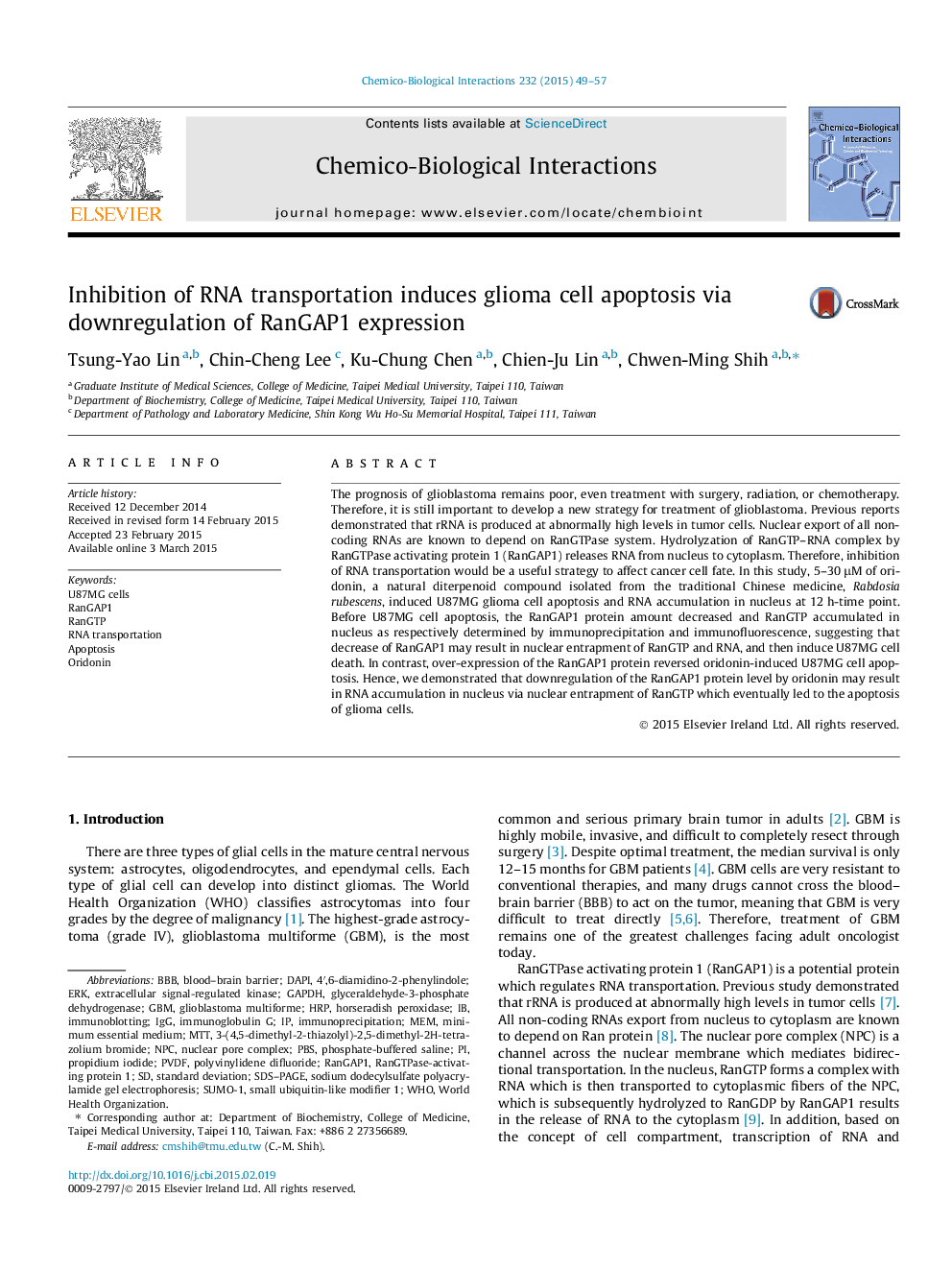| Article ID | Journal | Published Year | Pages | File Type |
|---|---|---|---|---|
| 2580202 | Chemico-Biological Interactions | 2015 | 9 Pages |
•RanGAP1 protein level affects RNA transportation in U87MG glioma cells.•Impairment of RNA transport inhibits glioma cell viability.•Inhibition of RanGAP1 may be a novel therapeutic strategy for glioma patients.
The prognosis of glioblastoma remains poor, even treatment with surgery, radiation, or chemotherapy. Therefore, it is still important to develop a new strategy for treatment of glioblastoma. Previous reports demonstrated that rRNA is produced at abnormally high levels in tumor cells. Nuclear export of all non-coding RNAs are known to depend on RanGTPase system. Hydrolyzation of RanGTP–RNA complex by RanGTPase activating protein 1 (RanGAP1) releases RNA from nucleus to cytoplasm. Therefore, inhibition of RNA transportation would be a useful strategy to affect cancer cell fate. In this study, 5–30 μM of oridonin, a natural diterpenoid compound isolated from the traditional Chinese medicine, Rabdosia rubescens, induced U87MG glioma cell apoptosis and RNA accumulation in nucleus at 12 h-time point. Before U87MG cell apoptosis, the RanGAP1 protein amount decreased and RanGTP accumulated in nucleus as respectively determined by immunoprecipitation and immunofluorescence, suggesting that decrease of RanGAP1 may result in nuclear entrapment of RanGTP and RNA, and then induce U87MG cell death. In contrast, over-expression of the RanGAP1 protein reversed oridonin-induced U87MG cell apoptosis. Hence, we demonstrated that downregulation of the RanGAP1 protein level by oridonin may result in RNA accumulation in nucleus via nuclear entrapment of RanGTP which eventually led to the apoptosis of glioma cells.
